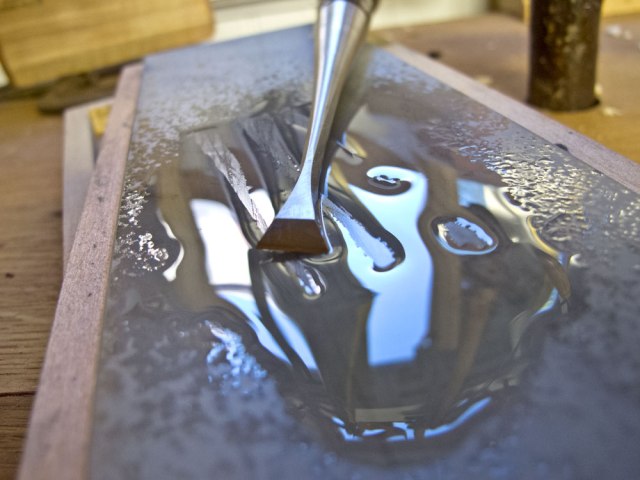
Pure opinion: Buying sharpening stuff would be easier if manufacturers used microns to describe the particle size of the abrasive in each product.
While microns isn’t a perfect description, it’s a heck of a lot better than saying a stone is a “fine crystolon” when that stone is useful only for grinding away damage on a woodworking tool.
Woodworker Bert Bleckwenn recently created a chart that converts many sharpening products for woodworkers to microns and shared it with me. It’s an excellent and useful chart and is a good way to understand how coarse or fine your abrasives are.
Sharpening & Honing – Stones – Abrasives – Inventory – 050514
A couple of caveats: Natural products are difficult to rate this way. For example, novaculite is the abrasive found in Arkansas oilstones. These can be coarser or finer depending on the individual stone. And there are other factors with abrasives – too many to really write about here without creating a book.
So if you have problems with this chart, I ask only this: Make a better one and I’ll consider posting it, too.
When I sharpen, here are the micron sizes I use for each operation.
- Grinding. This is the rapid removal of material to repair an edge, reshape it or to shrink my secondary bevel. I like a particle size that is 50 microns or larger.
- Honing. When I have dulled an edge and need to recreate a new zero-radius intersection, I like an abrasive that is between 15 and 6 microns.
- Polishing. All abrasives smaller than 6 microns are polishing media in my eye. How far you polish is personal. I usually polish at about 3 microns and then finish at 1 micron or so.
Thanks to Bert for this chart. And thanks in advance to readers for not trying to turn this post into a fight over sharpening (that’s a hint).
— Christopher Schwarz